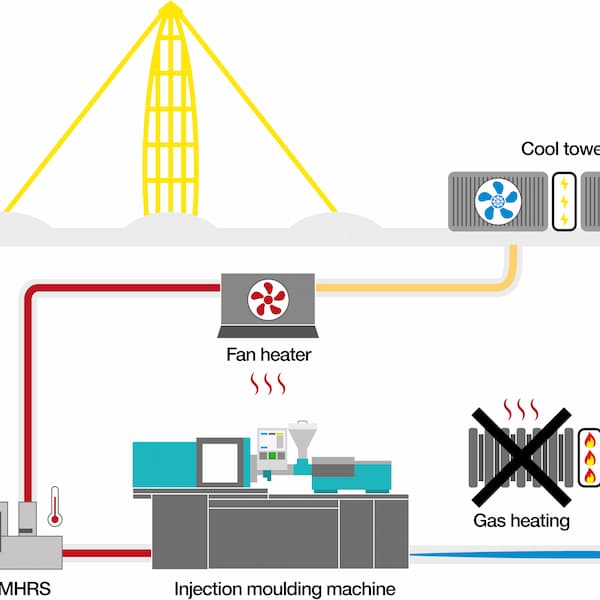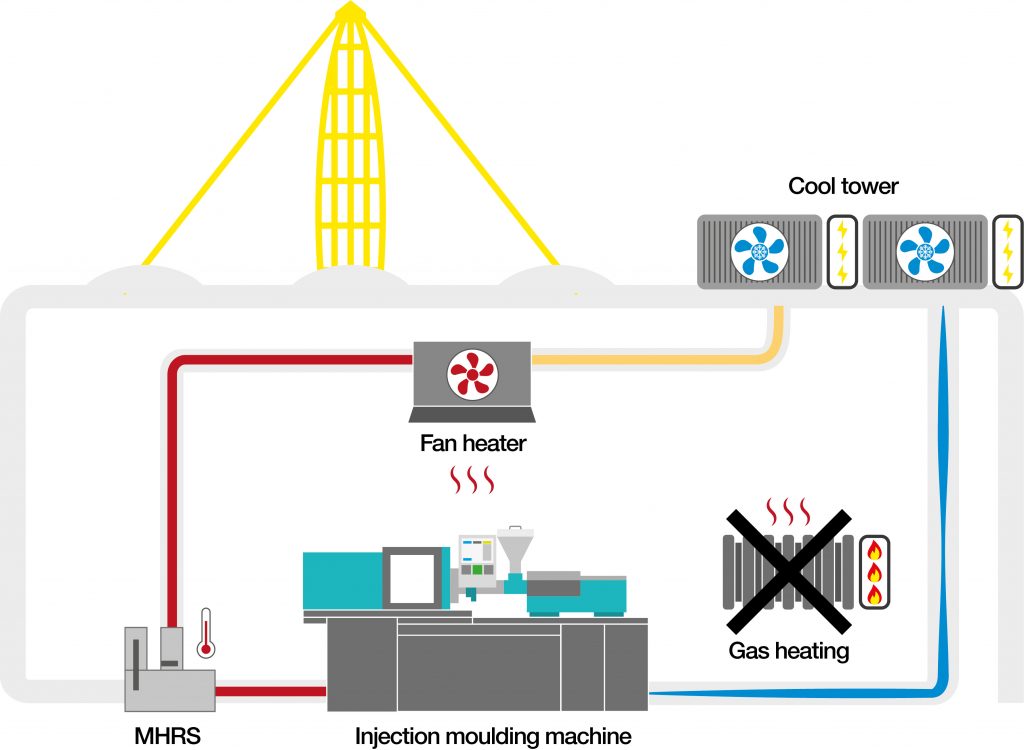 Add My Company
Add My Company
What is a Heat Recovery System?

Environmental technology is evolving at a rapid pace and to be honest, it needs to. Heat recovery systems are one of the new revolutionary technologies that igus® is investing in and using and this blog post is looking at the question, what is a heat recovery system?
What is a heat recovery system?
With energy prices rising – even with any recent price falls, the longer trend is that they will continue to rise. Coupled with climate change acceleration it is clear that change is needed and quickly. With this in mind, igus® started the journey to climate-neutral manufacturing production by 2025. Three of our engineers had an idea on how to eliminate the use of fossil fuels during production and their idea became a reality. They are now using this technology developed in-house in the form of a heat recovery system.
This heat recovery system draws heat from the injection machines and refilters it with the air from outside. The system uses waste heat generated from machinery and uses this to heat factories and industrial units saving gas costs and also CO2 emissions.
How has igus® used this technology?
Initially the engineers experimented with computer fans and as the experiments grew, they found they could heat larger areas. After six months, the new concept, called “Machine Heat Recovery System” (MHRS) succeeded in heating one of our largest production halls in Germany, simply using waste heat from the injection moulding machines.
How it works is, depending on the heating requirements, MHRS directs the hot water flow from the cooling circuit directly to the fan heaters, while simultaneously ensuring that the machines don’t overheat. Heat is then extracted from the hot water as it passes through the fan heater, therefore the demand on the factory’s cooling tower is reduced and the mains gas heating system is not required or reduced. This also helps reduce the electrical energy used for cooling.

The system in more detail
Hydraulic motors of the injection moulding machines heat up during their operation and similarly to cars, these need cooling to protect against overheating. Cooling towers are used in factories, supplying cold water to the moulding machines, the hot water then returns to the cooling tower. When re-cooled, the heat escapes into the atmosphere and energy is therefore lost.
The difference with the MHRS is, some of the heat from the cooling circuit is captured via a flow control system and directed into the heaters, which are located next to the old gas heating fans. To stop these heaters from clogging immediately, the solids suspended in the water are filtered out. The warm water enters the new fan heater and deactivates the old device. A fan located on the heater finally distributes the heated air in the hall. Only then does the water flow back to the cooling tower and the cycle begins again. Since heat exchangers are not used, the system can also be operated in the low-temperature range.
The igus® version of the MHRS does not use traditional expensive heat pumps to exchange heat and therefore has no requirement for a heat exchanger. There is also no need to feed in the waste heat from air compressors. Thanks to this new technology, we are already reducing compressed air energy and energy costs.
A concept for all industries
Our next plan is to equip the large logistics centre with nine fan heaters. This alone could save approximately 31.5 tonnes of CO2 every year. This is an important step for us as a company to get closer to the goal of being carbon-neutral within buildings and production by 2025.
Spurred on by the success so far, we are making the technology available to other industrial companies as well. A quick calculation shows that over one million tonnes of CO2 and over 548 million cubic metres of gas could be saved if all injection moulders worldwide were to use the technology, therefore have made the details of the technology available online to industrial companies. And we have done this for free.
This is one more step within our sustainability goal to not only reducing our own consumption but helping others reduce theirs.
For more information on What is a Heat Recovery System? talk to igus UK

